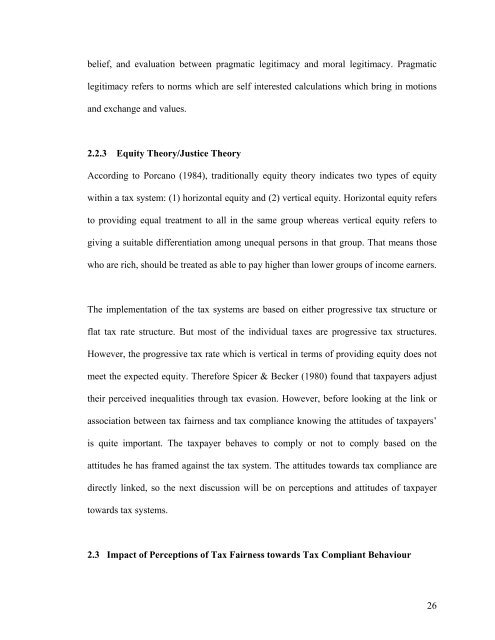1 CHAPTER 1: INTRODUCTION 1.0 Chapter ... - DSpace@UM
1 CHAPTER 1: INTRODUCTION 1.0 Chapter ... - DSpace@UM
1 CHAPTER 1: INTRODUCTION 1.0 Chapter ... - DSpace@UM
You also want an ePaper? Increase the reach of your titles
YUMPU automatically turns print PDFs into web optimized ePapers that Google loves.
elief, and evaluation between pragmatic legitimacy and moral legitimacy. Pragmaticlegitimacy refers to norms which are self interested calculations which bring in motionsand exchange and values.2.2.3 Equity Theory/Justice TheoryAccording to Porcano (1984), traditionally equity theory indicates two types of equitywithin a tax system: (1) horizontal equity and (2) vertical equity. Horizontal equity refersto providing equal treatment to all in the same group whereas vertical equity refers togiving a suitable differentiation among unequal persons in that group. That means thosewho are rich, should be treated as able to pay higher than lower groups of income earners.The implementation of the tax systems are based on either progressive tax structure orflat tax rate structure. But most of the individual taxes are progressive tax structures.However, the progressive tax rate which is vertical in terms of providing equity does notmeet the expected equity. Therefore Spicer & Becker (1980) found that taxpayers adjusttheir perceived inequalities through tax evasion. However, before looking at the link orassociation between tax fairness and tax compliance knowing the attitudes of taxpayers’is quite important. The taxpayer behaves to comply or not to comply based on theattitudes he has framed against the tax system. The attitudes towards tax compliance aredirectly linked, so the next discussion will be on perceptions and attitudes of taxpayertowards tax systems.2.3 Impact of Perceptions of Tax Fairness towards Tax Compliant Behaviour26
















